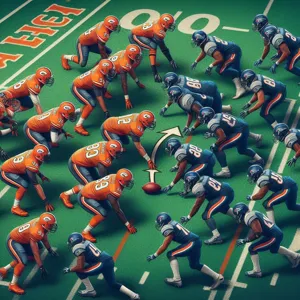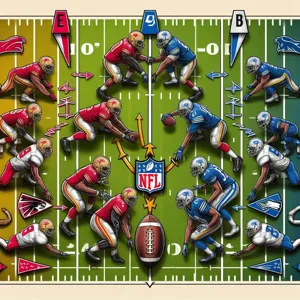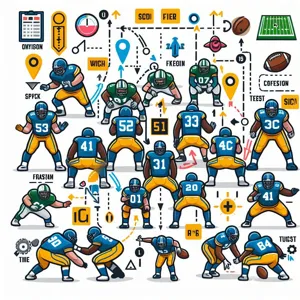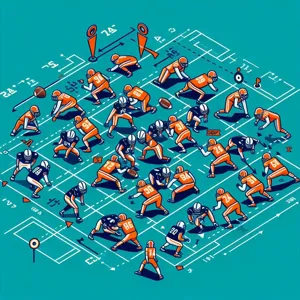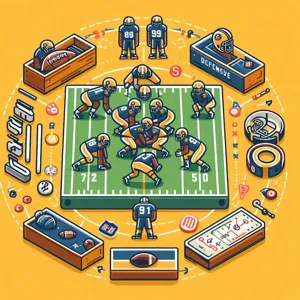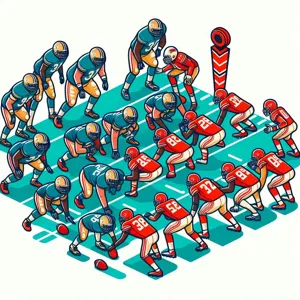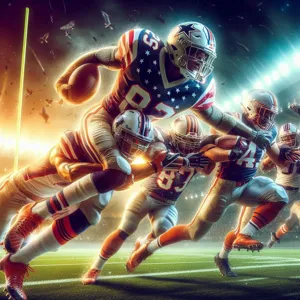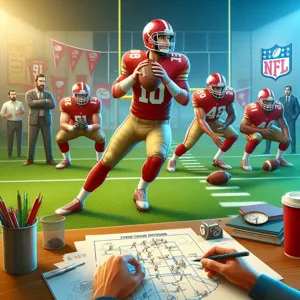Riding a motorbike offers an exhilarating sense of freedom, but it also comes with its fair share of risks and responsibilities.
As you navigate the open roads and winding paths, ensuring that you have the right insurance coverage is essential for your peace of mind and financial protection. With a multitude of motorbike insurance options available, from basic liability to comprehensive policies, the choices can be overwhelming. Understanding the nuances of each option is crucial, not only for compliance with legal requirements but also for safeguarding your investment and wellbeing. In this comprehensive guide, we will delve into the various types of motorbike insurance, break down their coverage details, and help you make informed decisions that best suit your riding style and lifestyle. Whether you’re a seasoned rider or a newcomer to the motorbike community, this post will equip you with the knowledge you need to hit the road confidently and securely.
1. Introduction to Motorbike Insurance

When it comes to hitting the open road on two wheels, ensuring that you have the right motorbike insurance is crucial for both peace of mind and financial protection. Motorbike insurance isn’t merely an added expense; it’s a vital safeguard against the unpredictability of the road, offering coverage that extends beyond just basic liability.
In essence, motorbike insurance functions similarly to car insurance, but it caters specifically to the unique needs and risks associated with riding a motorcycle. From protecting you against theft and damage to covering potential liabilities in the event of an accident, a robust insurance policy can be the difference between a smooth ride and a financial headache.
Understanding the various types of motorbike insurance options available is essential for riders—whether you’re a seasoned veteran or a newcomer to the biking world. Each policy comes with its own set of coverage types, terms, and exclusions, making it imperative to do your homework before hitting the road.
In this guide, we’ll delve into the common motorbike insurance options available, exploring their coverage specifics, advantages, and what to consider when selecting a policy that best fits your riding style and lifestyle. Whether you’re cruising through scenic routes or commuting through busy urban streets, being informed about motorbike insurance will empower you to navigate your insurance options with confidence, ensuring that you can focus on the thrill of the ride ahead.
2. Why Motorbike Insurance is Essential
When it comes to hitting the open road on two wheels, having the right motorbike insurance isn’t just a good idea; it’s essential. The thrill of riding can be exhilarating, but it also comes with its fair share of risks. Motorbike insurance provides a safety net that protects you, your bike, and others on the road in the event of an accident or unforeseen circumstances.
Firstly, motorbike insurance is crucial for legal compliance. In many regions, riding without insurance can lead to hefty fines, license suspensions, and even legal action. It’s not just about following the law; it’s about securing your peace of mind. Knowing that you are covered in case of an accident allows you to focus on enjoying the ride rather than worrying about the financial implications of a mishap.
Moreover, the right insurance policy offers financial protection against damage to your bike. Whether you encounter a minor spill or a major collision, repair costs can quickly add up. Comprehensive coverage can help you get back on your feet without the burden of expensive repair bills. Additionally, if your bike is stolen or damaged due to vandalism, having the right coverage ensures that you are not left high and dry.
Motorbike insurance also extends its protective umbrella to third parties. If you’re involved in an accident that causes injury or property damage to another person, liability coverage ensures that you won’t face devastating financial repercussions. This kind of coverage is vital for safeguarding not only your assets but also your reputation as a responsible rider.
In summary, motorbike insurance is more than just a legal requirement; it’s a critical component of responsible riding. It provides financial protection, peace of mind, and legal compliance, allowing you to embrace the freedom of the open road with confidence. So before you rev up your engine, make sure you have the right coverage in place to navigate the twists and turns ahead.
3. Understanding Different Types of Motorbike Insurance

When it comes to protecting your two-wheeled investment, understanding the different types of motorbike insurance is key to navigating the often complex landscape of coverage options. Each type serves a unique purpose and can significantly impact your financial security on the road.
1. **Third-Party Liability Insurance**: This type of insurance is the bare minimum requirement in many places and is essential for any motorcyclist. It covers damages you may cause to another person or their property in the event of an accident. While it’s often more affordable than comprehensive coverage, it does not protect your own bike or injuries sustained in an accident.
2. **Comprehensive Coverage**: For those who want peace of mind, comprehensive insurance offers a broader range of protection. This coverage not only includes third-party liability but also protects your bike from damages caused by theft, vandalism, fire, or natural disasters. If you’re riding a newer or more expensive motorcycle, this type of insurance can be particularly worthwhile.
3. **Collision Coverage**: Collision insurance steps in when your motorbike is damaged in an accident, regardless of who is at fault. This option is crucial for riders who want to ensure their bike is repaired without a hefty out-of-pocket expense. It’s especially recommended for those with high-performance or custom bikes.
4. **Personal Injury Protection (PIP)**: In the unfortunate event of an accident, personal injury protection can cover medical expenses for you and your passengers, regardless of fault. This can include hospital bills, rehabilitation costs, and even lost wages due to an inability to work. PIP can be a lifesaver, providing essential financial support in a time of need.
5. **Uninsured/Underinsured Motorist Coverage**: Riding a motorcycle comes with its share of risks, especially when sharing the road with others who may not have sufficient insurance. This type of coverage protects you in the event that you’re involved in an accident with a driver who is either uninsured or lacks enough coverage to pay for the damages.
By understanding these different types of motorbike insurance, you can tailor your policy to fit your specific needs and riding habits. Whether you’re a weekend warrior or a daily commuter, having the right coverage can make all the difference in keeping you safe and secure on the open road.
4. Liability Coverage: What You Need to Know
When it comes to motorbike insurance, liability coverage is not just a legal requirement in many regions; it’s a crucial safety net that protects you financially in the event of an accident. In essence, liability coverage helps cover the costs associated with damage or injury you may cause to another person or their property while riding your motorcycle. Understanding the ins and outs of this coverage is key to ensuring that you’re adequately protected on the road.
There are typically two main components to liability coverage: bodily injury liability and property damage liability. Bodily injury liability covers medical expenses, lost wages, and other costs for the other party involved in an accident where you are at fault. This coverage is essential, as medical bills can skyrocket quickly, and being underinsured could lead to significant out-of-pocket expenses.
On the other hand, property damage liability covers damages to the other person’s vehicle or property. Whether it’s a car, fence, or any other structure, this part of your liability coverage ensures that you can pay for repairs or replacements without emptying your wallet.
It’s important to assess how much liability coverage you need. While some states set minimum coverage amounts, they might not be sufficient to cover all potential expenses, especially in serious accidents. Consider your assets and how much you could afford to lose in a lawsuit. Increasing your coverage limits may provide greater peace of mind and protect you against unforeseen liabilities.
Moreover, keep in mind that liability coverage does not protect your own injuries or damages to your motorcycle. To ensure comprehensive protection, you may want to explore additional coverage options such as collision and comprehensive insurance. In short, understanding and investing in the right level of liability coverage is a fundamental step in safeguarding your riding experience and financial future.
5. Collision Coverage: Protecting Your Ride

Collision coverage is a crucial component of any comprehensive motorbike insurance policy, designed specifically to protect your prized possession against the unforeseen realities of the open road. Whether you’re an everyday commuter, a weekend warrior, or an avid adventurer, accidents can happen in the blink of an eye, and collision coverage ensures that you’re not left to bear the financial burden alone.
This type of coverage kicks in when your motorcycle is damaged in a collision with another vehicle, object, or when it tips over, regardless of fault. Imagine navigating a tight corner only to find yourself clipped by an errant car or hitting a pothole that sends you sprawling. Collision coverage will help repair your bike or, in the unfortunate event that it’s deemed a total loss, provide you with a payout that reflects its actual cash value before the accident.
It’s important to note that collision coverage typically comes with a deductible—a predetermined amount you’ll need to pay out of pocket before your insurance kicks in. Choosing a higher deductible can lower your premium, but it also means more out-of-pocket costs if you do file a claim. Therefore, it’s essential to evaluate your riding habits, the value of your motorcycle, and your financial situation when deciding on the appropriate deductible level.
Additionally, while collision coverage is vital for protecting your motorcycle, it often works best in conjunction with other coverage options, such as comprehensive coverage, which addresses non-collision-related incidents like theft, vandalism, or natural disasters. Together, these options create a robust safety net that allows you to ride with confidence, knowing that your investment is protected no matter what the road throws your way.
In summary, collision coverage is a smart move for any motorcycle owner. By understanding its benefits and how it fits into your overall insurance strategy, you can ensure your ride remains a source of joy and freedom, untainted by the potential financial pitfalls of accidents and mishaps.
6. Comprehensive Coverage: Beyond the Basics
Comprehensive coverage is often viewed as the gold standard in motorbike insurance, providing a safety net that goes far beyond the basics of liability protection. While standard liability policies cover damages and injuries you may cause to others, comprehensive coverage protects your own bike against a wide array of potential risks. This type of policy usually includes protection against theft, vandalism, natural disasters, and even accidents involving uninsured motorists.
Imagine cruising down a scenic highway, wind in your hair, when suddenly a storm rolls in, causing debris to scatter across the road. With comprehensive coverage, you’ll be safeguarded against the costs of repairs if your bike is damaged by falling branches or hail. Similarly, if your bike is stolen from your garage or during a stop at a café, comprehensive coverage can help you recover the financial loss, allowing you to get back on the road sooner rather than later.
Moreover, many comprehensive policies offer additional perks such as coverage for custom parts and accessories, which is crucial for riders who have personalized their bikes with aftermarket modifications. This means that if your unique handlebars or custom paint job are damaged or stolen, you won’t be left footing the bill entirely out of pocket.
When exploring comprehensive coverage, it’s essential to compare policies and understand the specific inclusions and exclusions. Some policies may also offer optional add-ons, such as roadside assistance and rental reimbursement, which can provide peace of mind when you’re out on the road. In a world where the unexpected can happen at any moment, comprehensive coverage stands as a robust shield, ensuring that you’re not only protected against accidents but also against the uncertainties that life throws your way.
7. Uninsured and Underinsured Motorist Coverage

When it comes to safeguarding yourself on the road, understanding the nuances of uninsured and underinsured motorist coverage is essential for every motorbike rider. This often-overlooked aspect of insurance plays a crucial role in protecting you against drivers who either lack insurance altogether or carry insufficient coverage to adequately compensate for damages in the event of an accident.
Imagine this scenario: you’re enjoying a peaceful ride on your motorcycle when suddenly, you’re involved in a collision with another vehicle. As you assess the situation, you realize that the other driver does not have insurance. Without uninsured motorist coverage, you could find yourself facing significant medical bills, repairs, and other expenses, all while trying to navigate the aftermath of the accident. This is where this specific coverage becomes invaluable.
Uninsured motorist coverage ensures that your own insurance policy will cover your medical expenses and damages, even if the at-fault party is unprotected. On the other hand, underinsured motorist coverage kicks in when the other driver has insurance, but their policy limits are too low to cover the full extent of the damages. Together, these options act as a safety net, providing peace of mind so you can focus on your recovery instead of financial stress.
It’s important to review your policy details and consider adding these coverages if they aren’t already included. While they may raise your premium slightly, the potential financial relief in the event of an accident can far outweigh the cost. Riding a motorcycle comes with its own set of risks, and being adequately insured against the uncertainties of the road is a vital step in ensuring your safety and security. By investing in uninsured and underinsured motorist coverage, you’re not only protecting yourself; you’re also investing in a more secure riding experience that allows you to enjoy the freedom of the open road with confidence.
8. Personal Injury Protection (PIP) Explained
Personal Injury Protection (PIP) is a critical component of motorbike insurance that focuses on the wellbeing of the rider and any passengers involved in an accident. Often regarded as a safety net, PIP coverage is designed to alleviate the financial burden associated with medical expenses, lost wages, and even rehabilitation costs resulting from a motorcycle accident, regardless of who is at fault.
What sets PIP apart from standard liability coverage is its comprehensive approach to medical expenses. While liability insurance covers damages to other people in an accident, PIP ensures that you and your passengers receive immediate medical attention and care, no matter the circumstances of the incident. This can include hospital bills, surgical costs, chiropractic care, and even necessary home modifications following severe injuries.
In many states, PIP is mandatory, but it is advisable for all riders to consider its benefits, even in areas where it is optional. The peace of mind that comes from knowing you are protected against unexpected medical costs can be invaluable, especially considering the high risk associated with motorcycle riding.
Moreover, PIP can also cover lost wages if you are unable to work due to injuries sustained in an accident. This aspect is particularly important for those who rely on their income to support themselves or their families. Additionally, PIP may help with funeral expenses in the unfortunate event of a fatal accident, offering a layer of security during an already difficult time.
When selecting your motorbike insurance policy, it’s essential to evaluate the PIP coverage limits and consider your unique circumstances. For instance, if you frequently ride with passengers or engage in longer-distance travels, opting for higher PIP limits may be a smart choice. Understanding what Personal Injury Protection entails will empower you to make informed decisions that prioritize your safety and financial security on the road.
9. Custom Parts and Accessories Coverage
When it comes to motorbike insurance, many riders are passionate about personalizing their bikes with custom parts and accessories. From sleek handlebars and vibrant paint jobs to high-performance exhaust systems and advanced safety features, customization is often a reflection of a rider’s personality and style. However, it’s crucial to understand how these modifications are protected under your insurance policy.
Custom parts and accessories coverage is an essential component of motorbike insurance that specifically addresses the unique modifications you’ve made to your bike. Standard policies typically cover the base value of the motorcycle, but they may not account for the additional investment you’ve put into aftermarket enhancements. This can leave owners vulnerable to significant out-of-pocket expenses in the event of theft or damage.
When shopping for insurance, it’s important to inquire specifically about coverage limits for custom parts and accessories. Some policies offer a specific amount of coverage, often ranging from $1,000 to $30,000, depending on the provider and your base policy. If you have invested heavily in custom work, such as a bespoke seat or specialized suspension, you may want to consider adding additional coverage or opting for a policy that includes a higher limit for these enhancements.
Furthermore, keep detailed records of your custom parts, including receipts and photographs, to ensure you can substantiate their value should you need to file a claim. Additionally, some insurers may offer a rider or endorsement that can be added to your policy, providing extra protection for customizations that exceed the standard coverage limits.
In summary, understanding and securing custom parts and accessories coverage can safeguard your investment and ensure that your personalized ride is fully protected on the road. Whether you’re a casual rider or a dedicated enthusiast, this coverage is a vital piece of the puzzle in navigating the complexities of motorbike insurance.
10. How to Choose the Right Deductible
Choosing the right deductible for your motorbike insurance is a crucial step that can significantly impact your financial protection and monthly premiums. The deductible—the amount you agree to pay out of pocket before your insurance kicks in—can vary widely depending on the policy you select. It’s important to strike a balance that aligns with your riding habits and financial situation.
When considering your deductible, start by evaluating your riding frequency and the type of motorcycle you own. If you ride often and your bike is a high-value model, opting for a lower deductible may be wise. This way, in the event of an accident or damage, you won’t face a substantial out-of-pocket expense when you file a claim. On the other hand, if you’re a casual rider or own an older bike with a lower market value, a higher deductible could save you money on your premiums while still providing adequate coverage.
Next, assess your personal financial situation. Can you comfortably cover a higher deductible in the event of a mishap, or would it strain your budget? Choosing a deductible that you can easily pay will help you avoid any financial stress should you need to file a claim. Additionally, consider your risk tolerance. If you’re confident in your riding skills and believe you’re less likely to encounter accidents, you might feel comfortable opting for a higher deductible to enjoy lower monthly payments.
Finally, don’t hesitate to reach out to your insurance provider for guidance. They can help you understand how different deductibles will affect your premium and claims process, allowing you to make an informed decision. By carefully weighing these factors, you’ll be better equipped to choose a deductible that provides the right balance between savings and peace of mind on the road.
11. Factors Affecting Motorbike Insurance Premiums
When it comes to determining the cost of your motorbike insurance premiums, several key factors come into play, each uniquely influencing how much you’ll pay to protect your ride. Understanding these elements can empower you to make informed decisions and potentially save on your policy.
**1. Riding Experience:** Your experience as a rider is a primary factor insurers consider. New or less experienced riders are statistically more likely to be involved in accidents, leading to higher premiums. Conversely, seasoned riders with a clean driving record often enjoy lower rates, as they present a lower risk to insurance companies.
**2. Type of Motorcycle:** The make and model of your motorbike significantly impact your premium. High-performance bikes, such as sport or touring models, typically incur higher insurance costs due to their increased risk of theft and higher potential for accidents. On the other hand, cruisers or scooters may attract lower premiums since they are generally associated with a more cautious riding style.
**3. Coverage Level:** The extent of coverage you choose directly correlates with your premium. Opting for comprehensive or full coverage will naturally cost more than basic liability insurance. While comprehensive plans provide extensive protection against theft, damage, and more, they may not be necessary for all riders, especially those with older bikes.
**4. Location:** Where you live has a considerable impact on your insurance rates. Urban areas with higher populations and traffic typically experience more accidents and theft, leading to increased premiums. Conversely, rural locations might see lower rates due to reduced risk factors.
**5. Claims History:** Your claims history is a reflection of your risk profile. If you’ve made frequent claims in the past, insurers may view you as a higher risk, leading to elevated premiums. Maintaining a clean claims record can help you secure better rates in the long run.
**6. Safety Features:** Modern motorcycles often come equipped with advanced safety features, such as anti-lock braking systems (ABS) or anti-theft devices. Bikes with these features may qualify for discounts on premiums, as they are perceived to offer a lower risk of accidents or theft.
**7. Discounts and Bundling:** Many insurance companies offer discounts for various reasons, such as safe riding courses or bundling multiple policies with the same provider. Taking advantage of these discounts can help reduce your overall premium, making it more affordable.
By considering these factors, you can better navigate the motorbike insurance landscape and find a policy that fits your needs and budget. Understanding how your choices affect your premiums allows you to take strategic steps towards securing the best coverage at the most competitive rates, ensuring peace of mind on every ride.
12. Tips for Lowering Your Insurance Costs
Insurance costs for motorbikes can often feel like a steep uphill climb, but there are several strategies that riders can employ to ease the burden on their wallets. Whether you’re a seasoned biker or just starting your two-wheeled journey, lowering your insurance premiums is not only smart but also entirely achievable with a few thoughtful adjustments.
**1. Shop Around:** The insurance market is competitive, and rates can vary significantly from one provider to another. Take the time to compare quotes from multiple insurance companies. online comparison tools can simplify this process, allowing you to evaluate coverage options and premiums side by side.
**2. Consider Your Coverage:** While comprehensive coverage offers peace of mind, it might be worth reassessing your policy to see if you’re over-insured. If your bike is older or has a lower market value, you may find that a basic liability policy is sufficient to protect your interests without breaking the bank.
**3. Increase Your Deductible:** Opting for a higher deductible can significantly reduce your monthly premiums. However, it’s essential to choose a deductible amount that you can comfortably afford in the event of a claim. Balancing your deductible with your overall financial situation is key.
**4. Take a Motorcycle Safety Course:** Many insurers offer discounts to riders who complete a motorcycle safety course. Not only does this enhance your riding skills and safety awareness, but it also signals to insurers that you’re a responsible rider, which can lead to lower premiums.
**5. Bundle Your Policies:** If you have other insurance policies, such as auto or home insurance, ask your provider about bundling options. Many companies provide discounts for customers who consolidate their coverage under one roof.
**6. Maintain a Clean Driving Record:** It’s no secret that a clean driving record translates to lower insurance rates. Avoiding accidents and traffic violations not only keeps you safe but also demonstrates to insurers that you are a low-risk rider.
**7. Store Your Bike Safely:** Keeping your motorcycle in a secure location, such as a garage or a locked shed, can reduce the risk of theft. Insurers often reward policyholders who take safety precautions with lower premiums.
**8. Look for Discounts:** Don’t hesitate to ask your insurance provider about any available discounts. Whether you are a member of a motorcycle association, a veteran, or a student, there may be opportunities to lower your costs.
By employing these strategies, you can navigate the often complex landscape of motorbike insurance with confidence, ensuring that you not only protect your ride but also keep your finances in check. Remember, a little effort can lead to significant savings, allowing you to spend more time enjoying the open road and less time worrying about your insurance costs.
13. Common Exclusions in Motorbike Insurance Policies
When purchasing motorbike insurance, it’s crucial to understand not only what is covered but also what is excluded from your policy. Common exclusions can leave riders vulnerable in situations where they might expect coverage, so being aware of these limitations is essential for making informed decisions.
One of the most frequent exclusions found in motorbike insurance policies is coverage for riding under the influence. If you are involved in an accident while under the influence of drugs or alcohol, your insurance provider will likely deny your claim, leaving you financially responsible for any damages or injuries. Additionally, many policies exclude coverage for accidents that occur while you’re riding without a valid motorcycle license or while the bike is being used for commercial purposes, such as food delivery or ride-sharing services.
Another common exclusion relates to modifications made to your motorcycle. If you’ve customized your bike with aftermarket parts or accessories, these may not be covered unless you specifically inform your insurer and adjust your policy to reflect these changes. Similarly, damage resulting from wear and tear or mechanical failure is typically not covered, meaning it’s up to you to maintain your bike in good condition.
The location where the incident occurs can also affect your coverage. For instance, some policies may exclude coverage for accidents that occur during racing events or off-road riding. Furthermore, theft coverage might be limited if your motorcycle is stolen while parked in an unsecured location or if you failed to lock it properly.
Lastly, it’s worth noting that natural disasters or extreme weather events, such as floods or hurricanes, may also fall outside the scope of your policy unless you have specifically opted for comprehensive coverage that includes these perils.
By understanding these common exclusions, you can better tailor your motorbike insurance policy to meet your needs and ensure you have the protection you require on the road. Always take the time to read the fine print and consult with your insurance provider to clarify any uncertainties. Being proactive about these exclusions will help you navigate your insurance options more effectively and safeguard your riding experience.
14. How to File a Claim: Step-by-Step Guide
Filing an insurance claim can seem daunting, especially when you’re dealing with the aftermath of an accident or damage to your motorbike. However, understanding the process can ease your concerns and help you navigate through it smoothly. Here’s a step-by-step guide to filing a claim and ensuring that you receive the support you need.
### Step 1: Ensure Safety First
Before anything else, make sure you and anyone else involved in the incident are safe. If necessary, seek medical attention immediately. Once you are in a safe location, gather your thoughts and prepare to document the situation.
### Step 2: Collect Information
Document all relevant details of the incident. This includes taking clear photographs of the damage to your motorbike and any other vehicles involved, as well as the surrounding area. Collect contact information from any witnesses, and be sure to note the date, time, and location of the incident. If law enforcement was involved, obtain a copy of the police report, as this can be crucial for your claim.
### Step 3: Contact Your Insurance Provider
As soon as you are able, reach out to your motorbike insurance provider. Most companies have a dedicated claims department that you can contact via phone or through their website. Have your policy number handy, along with the details you’ve gathered about the incident.
### Step 4: Initiate the Claim
Once you’re in touch with your insurer, they will guide you through the process of initiating your claim. Be prepared to provide all the information you collected, including the circumstances of the accident and any evidence you’ve gathered. Your insurer may also ask for specific details about your motorbike, such as its make, model, and VIN (Vehicle Identification Number).
### Step 5: Complete Necessary Documentation
Your insurance company will likely require you to fill out a claim form, which may be available online or provided by an agent. Ensure that you complete this form thoroughly and accurately, as any discrepancies can delay the processing of your claim. If you’re unsure about any section, don’t hesitate to ask your insurer for clarification.
### Step 6: follow Up
After submitting your claim, keep track of its status. Most insurance companies provide a claim number that you can use to check the progress. Don’t hesitate to follow up if you haven’t received updates within a reasonable timeframe, as this helps to keep your claim moving forward.
### Step 7: Review the Settlement Offer
Once your claim has been processed, your insurance company will present you with a settlement offer. Review this carefully to ensure it covers the full extent of your damages and losses. If you feel the offer is inadequate, you have the right to negotiate or appeal the decision. Provide any additional evidence or arguments that support your case.
### Step 8: Close the Claim
Once you agree to the settlement, your insurer will finalize the claim and issue your payment. Make sure to retain all documentation related to the claim for your records, as it may be useful for future reference or if you encounter issues later on.
By following these steps, you can navigate the claims process with confidence, ensuring that you receive the compensation you deserve to get back on the road as soon as possible. Remember, staying organized and proactive is key in this journey, and your insurer is there to help every step of the way.
15. Conclusion: Finding the Best Insurance for Your Needs
In conclusion, navigating the world of motorbike insurance can seem daunting, but understanding your options and their coverage can empower you to make informed decisions that best suit your needs. Whether you are a seasoned rider or a newcomer to the realm of two wheels, it’s essential to assess your unique circumstances—such as the type of bike you own, your riding habits, and your budget—to find the right policy.
Start by evaluating the fundamental coverage types: liability, collision, and comprehensive insurance. Each serves a specific purpose and varying degrees of protection. Liability insurance is often a legal requirement and protects you against claims for bodily injury or property damage to others. Collision insurance, on the other hand, covers damage to your motorcycle resulting from accidents, while comprehensive insurance safeguards against non-collision incidents such as theft or natural disasters.
Additionally, don’t overlook the importance of optional coverages like uninsured/underinsured motorist protection and personal injury protection. These can provide vital financial support in scenarios that standard policies may not cover.
As you embark on your search for the best insurance, it’s beneficial to shop around, compare quotes, and read customer reviews. Many providers offer discounts for safe riding, multiple policies, or memberships in motorcycle organizations, which can make your insurance more affordable.
Ultimately, the best motorbike insurance is one that offers the right balance of coverage, affordability, and service tailored specifically to you. By taking the time to research and understand your options, you can ride with confidence, knowing that you are protected against unforeseen circumstances on the open road. Safe riding!
In conclusion, navigating the world of motorbike insurance doesn’t have to be a daunting task. With a clear understanding of the common insurance options available and their respective coverage details, you can make informed decisions that best suit your riding needs and lifestyle. Whether you opt for liability coverage to protect yourself against third-party claims or comprehensive plans that safeguard your bike from theft and damage, knowing your choices empowers you as a rider. As you hit the open road, remember that the right insurance not only provides peace of mind but also allows you to enjoy the thrill of riding with confidence. Thank you for joining us on this journey, and we wish you safe and exhilarating adventures ahead!









